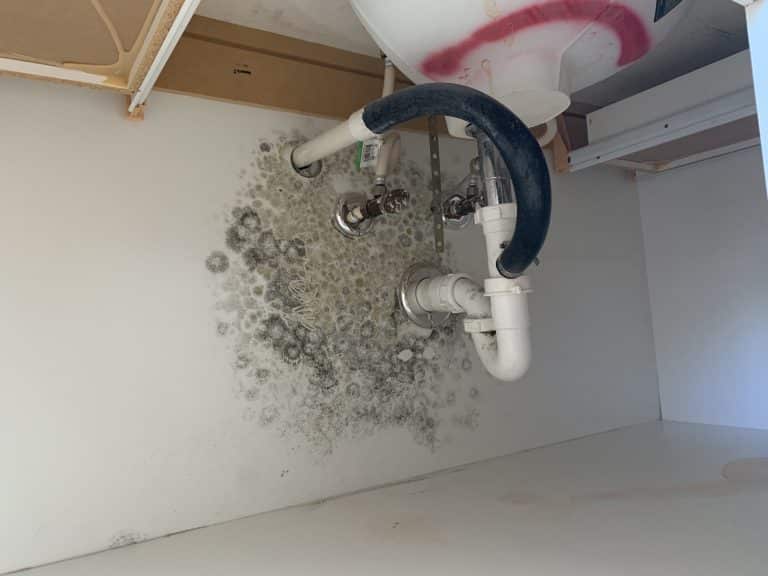If you’re feeling unwell and have ruled out the common causes, mold could be the primary suspect.
While generally harmless, toxic mold can cause allergic reactions.
In this article, you will know the different mold warning signs due to prolonged mold exposure.
We’ll then discuss what causes mold to grow in your home. From there, we can narrow down the places where mold is growing in your house.
Finally, you will know how to deal with toxic mold so you can get rid of its harmful effects.
Allergic Reactions
People contract allergic reactions from mold by inhaling them. And since mold spores travel through the air, you can still feel their effects even without direct contact to it.
Below are the initial allergy symptoms of exposure to mold:
- runny nose
- shortness of breath
- red eyes or watery eyes
Each of the symptoms above is attributed to causes like flu, cold, asthma, and conjunctivitis, to name a few.
However, if you’re experiencing all symptoms at the same time, then mold could be the root of it all.
While these allergic reactions are initially nothing serious, you should do something about it nonetheless.
The World Health Organization released guidelines on how to deal with dampness and mold in your home.
There is also a study that connects mold to the early development of asthma in children. And while more research is required to confirm this finding, it’s best to take immediate action to prevent allergies from escalating.
Causes of Mold Growth
But before you know what to do with your mold problem, you need to locate where it is growing in your home.
And that’s where the problems lie: finding mold can be difficult.
Not to mention, you could be growing different kinds of mold[1] depending on what you have in your home.
However, there are indicators to help you identify if you have a mold problem:
Wet Areas
Bathrooms, sinks, and toilets are familiar places where mold grows. In particular, you will usually see green-black stains on wall or floor grouts in your bathroom.
Expect mold to grow in areas of your home exposed to water. So, take time to clean these parts of your home to avoid mold from forming.
Water Leaks
Mold thrives in moisture. Leaky faucets or busted pipes can cause water stains on your walls or ceilings.
If you inspect behind the discolored spots, the mold has a greenish-black appearance with a slimy texture. It can also look like ordinary dirt. Both could be harmful if you don’t take immediate action.
To confirm that these are indeed mold, they should have an earthy and pungent smell.
If you don’t have a water problem, then you might notice bubbled or cracked paint on your walls or ceilings. This indicates that moisture seeped through the insides of your home.
As a result, mold should be present here.
Flooding
If your home is recovering from a flood, then you know how hard it is to piece everything back together.
The same goes for your home.
Even if you think you cleaned everything, there may be still water left in your basement, under your flooring and carpet, or behind your walls.
Over time, the mold will have fully grown and infested your household without you knowing it.
In these cases, you need to check the damage coverage of your home warranty to prevent this from coming.
What to Do from These Mold Warning Signs
The quick answer is for you to clean your home.
You can easily scrub off small areas of mold in your home using cleaning products, starting with a 1:8 bleach to water ratio cleaning mixture.
However, cleaning mold yourself is only a viable solution if you don’t suffer from allergic reactions. Further exposure to mold can trigger these symptoms and prevent you from getting rid of it.
If you have a more extensive mold problem, you need to take special precautions to finish this rather complicated job.
One thing you need to know about mold spores is that they spread all over your house and stick on you and all over your walls or ceilings.
For starters, wear old disposable clothes that you can throw in the trash after the clean-up.
When cleaning, use a fan to ventilate the room where you’re cleaning off the mold. The idea is to let the air circulate out of the room. So, direct the fan out the door or window.
Also, it’s best to throw out the fan after use since getting rid of the mold from the fan would be impossible.
To prevent the spores from going airborne, use a garden spray to neutralize them before cleaning them off.
Too Much Work? We’ll Do It for You!
Now, we’re just barely scratching the surface when it comes to cleaning your home from mold.
You have to consider how much mold your home has. Also, you need to know if you can get the job done, considering your time and know-how.
Therefore, if the mold in your home is too much for you to deal with, then you must enlist professional help.
Initially, you may want a free mold inspection to get the full picture of your mold problem. However, there are drawbacks to free inspections, so you don’t just take the offer of anyone offering this.
To get better understanding about the mold conditions in your home, you can hire us at AWA Mold Inspections.
If you’re in the Houston area, we not only can help you find the mold in your home. We can also check factors that cause its growth so we can nip it in the bud.
For this, we do a comprehensive visual examination. We also sample the home’s moisture, surface, and air to see if your home is a haven for mold.
From here, we’ll have a better understanding on how we can help you so you won’t have to worry about pesky mold ever again!
If you’re interested, fill out the form on the page or call us at 855-220-3900.








